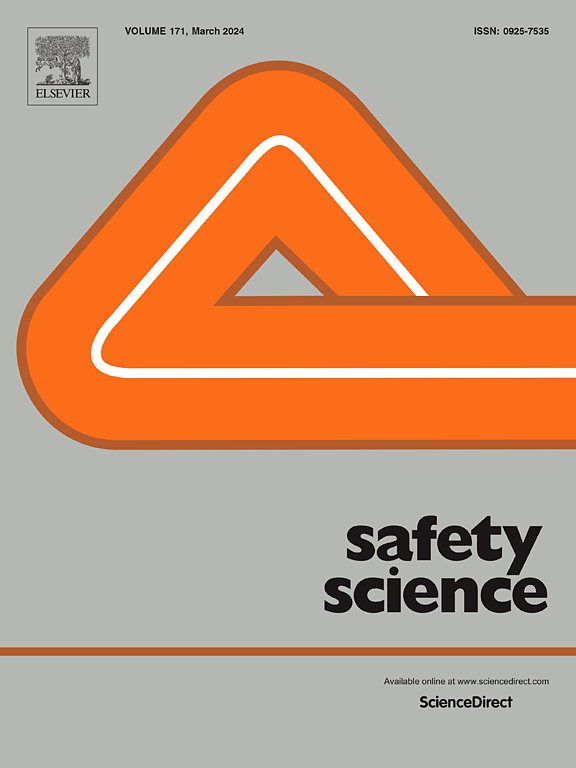Does legislating safety duties across the labour supply chain ensure contingent workers have equitable access to safety training?
IF 4.7
1区 工程技术
Q1 ENGINEERING, INDUSTRIAL
引用次数: 0
Abstract
Increasing demand for labour flexibility and the rise of the gig-economy has led increasingly to fractured labour supply chains. Recent legislative reforms in Australia and New Zealand place obligations on employers to ensure the health and safety of all workers whose work they control or direct, including, but not limited to employees. These reforms recognise the crucial role of OHS training. However, they expose an important gap in our understanding as to whether workers engaged in high-risk work across corporate boundaries now have equitable access to training.
This exploratory study surveyed 543 Australian permanent, causal and contract heavy vehicle drivers, comparing their access to various forms of OHS training and their experience and perceptions of hazardous events most commonly associated with fatal and high consequence injury in their industry. The reforms appear to improve access to external safety training courses, although significant differences in training participation mix and risk perceptions remain across employment types and some workers report multiple, often conflicting safety training messages.
The findings offer a novel and important contribution to the extensive literature on OHS training. Despite significant employer investment in training, efforts to absorb a cohort of (non-employee) workers into existing, corporate training systems appear largely unsuccessful and demonstrates a structural misalignment between (organisational) training models and (individuals’) training needs. However, resolving this mismatch will require a re-imagining of OHS training delivery to a more integrated model that can better identify and address gaps in the OHS knowledge and experience of an increasingly disparate group of workers.
在整个劳动力供应链中立法安全责任是否能确保临时工公平获得安全培训?
对劳动力灵活性的需求日益增加,零工经济的兴起,导致劳动力供应链日益断裂。澳大利亚和新西兰最近的立法改革规定,雇主有义务确保其控制或指导的所有工人的健康和安全,包括但不限于雇员。这些改革认识到职业安全与卫生培训的关键作用。然而,它们暴露了我们在理解上的一个重要差距,即从事跨公司高风险工作的工人现在是否有公平的培训机会。这项探索性研究调查了543名澳大利亚永久、因果和合同重型车辆司机,比较了他们接受各种形式的职业健康安全培训的机会,以及他们对行业中最常见的致命和高后果伤害相关危险事件的经历和看法。这些改革似乎改善了接受外部安全培训课程的机会,尽管不同就业类型的工人在培训参与组合和风险认知方面仍存在显著差异,一些工人报告了多种、往往相互矛盾的安全培训信息。这些发现为职业健康安全培训的广泛文献提供了新颖而重要的贡献。尽管雇主在培训方面投入了大量资金,但将一批(非雇员)工人吸收到现有的企业培训系统中的努力似乎很大程度上是不成功的,这表明(组织)培训模式与(个人)培训需求之间存在结构性偏差。然而,要解决这一不匹配问题,需要重新构想职业健康安全培训的交付方式,使其成为一种更加综合的模式,能够更好地识别和解决日益多样化的工人群体在职业健康安全知识和经验方面的差距。
本文章由计算机程序翻译,如有差异,请以英文原文为准。
求助全文
约1分钟内获得全文
求助全文
来源期刊

Safety Science
管理科学-工程:工业
CiteScore
13.00
自引率
9.80%
发文量
335
审稿时长
53 days
期刊介绍:
Safety Science is multidisciplinary. Its contributors and its audience range from social scientists to engineers. The journal covers the physics and engineering of safety; its social, policy and organizational aspects; the assessment, management and communication of risks; the effectiveness of control and management techniques for safety; standardization, legislation, inspection, insurance, costing aspects, human behavior and safety and the like. Papers addressing the interfaces between technology, people and organizations are especially welcome.
 求助内容:
求助内容: 应助结果提醒方式:
应助结果提醒方式:


